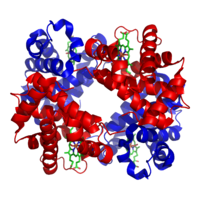
Photo from wikipedia
Induced protein degradation accomplishes elimination, rather than inhibition, of pathological proteins. Key to the success of this novel therapeutic modality is the modification of proteins with ubiquitin chains, which is… Click to show full abstract
Induced protein degradation accomplishes elimination, rather than inhibition, of pathological proteins. Key to the success of this novel therapeutic modality is the modification of proteins with ubiquitin chains, which is brought about by molecular glues or bivalent compounds that induce proximity between the target protein and an E3 ligase. The human genome encodes ∼600 E3 ligases that differ widely in their structures, catalytic mechanisms, modes of regulation, and physiological roles. While many of these enzymes hold great promise for drug discovery, few have been successfully engaged by small-molecule degraders. Here, we review E3 ligases that are being used for induced protein degradation. Based on these prior successes and our growing understanding of the biology and biochemistry of E3 ligases, we propose new ubiquitylation enzymes that can be harnessed for drug discovery to firmly establish induced protein degradation as a specific and efficient therapeutic approach.
Journal Title: Cell chemical biology
Year Published: 2021
Link to full text (if available)
Share on Social Media: Sign Up to like & get
recommendations!